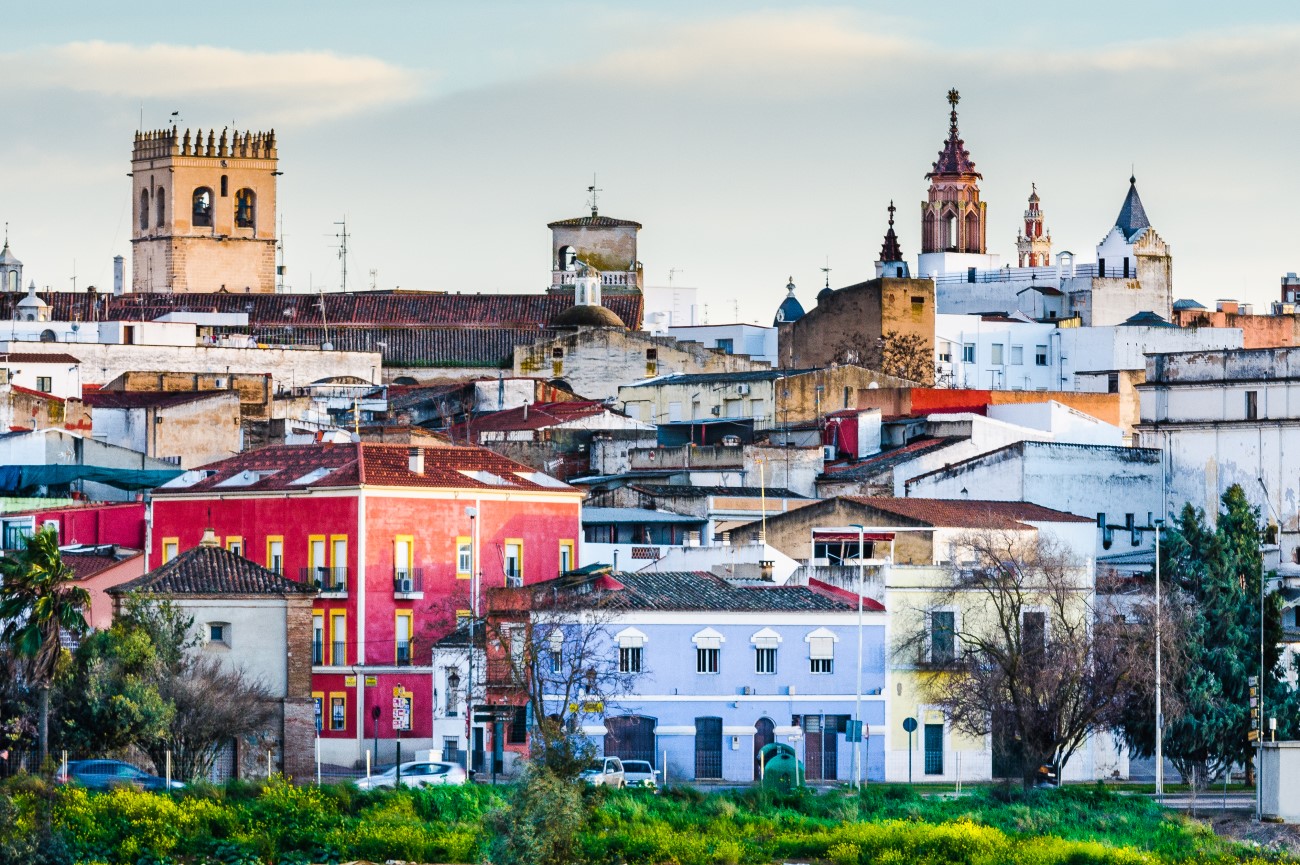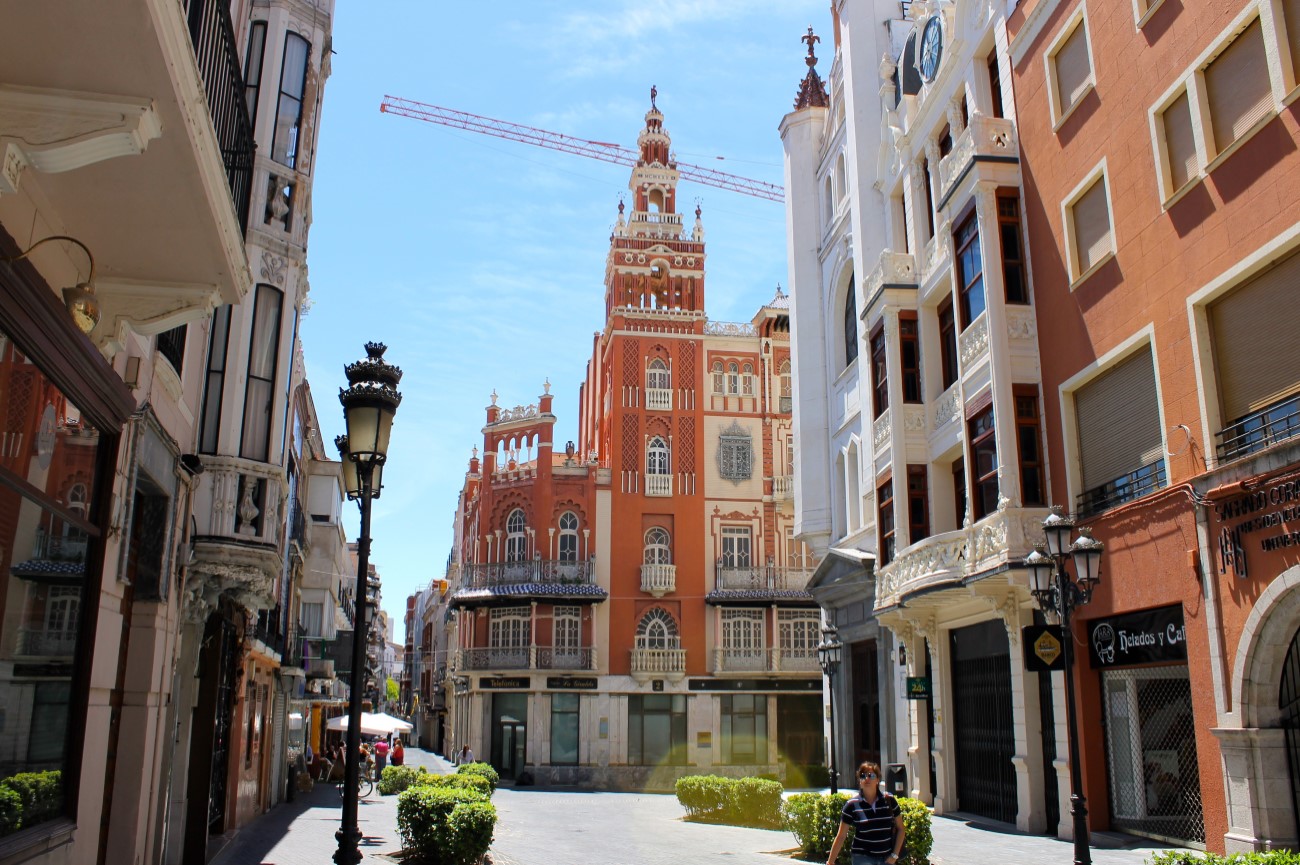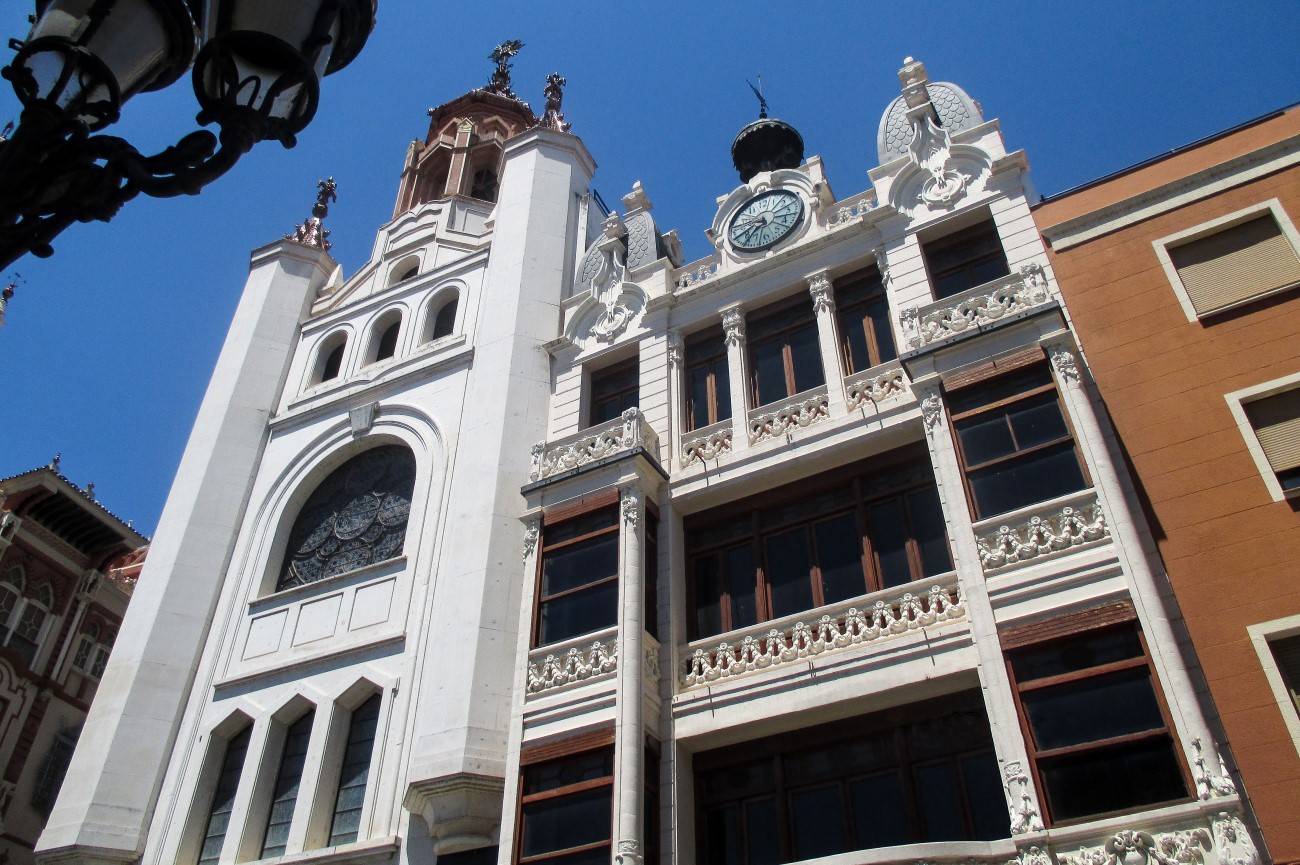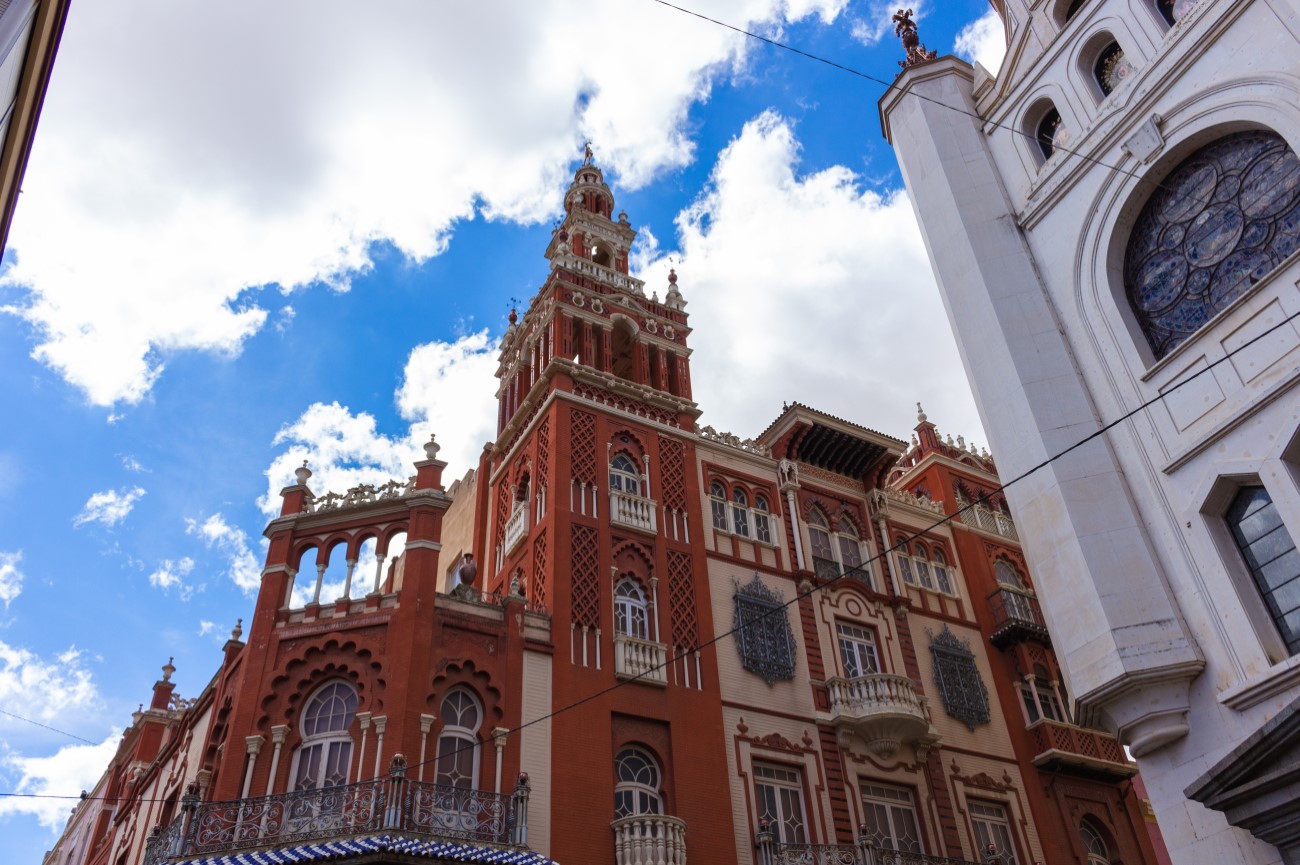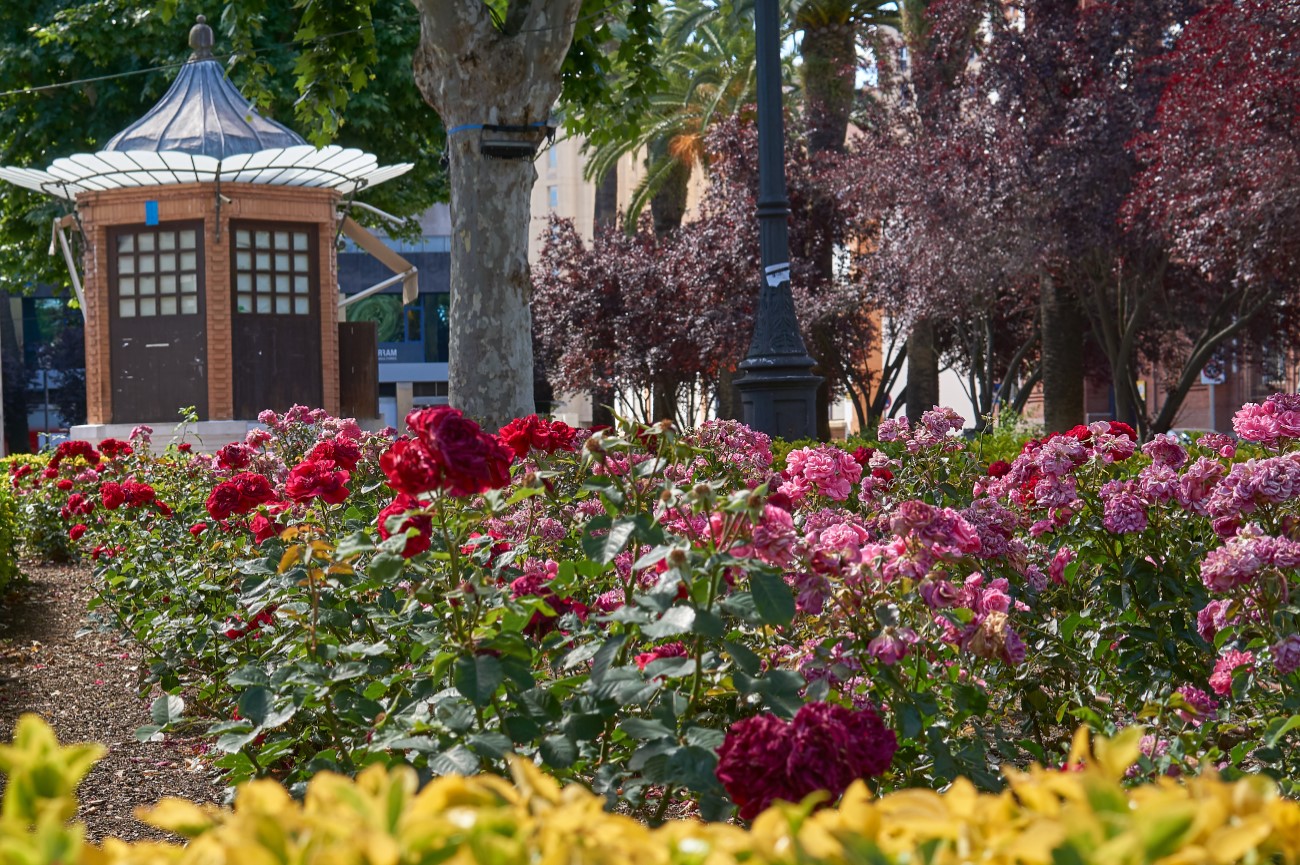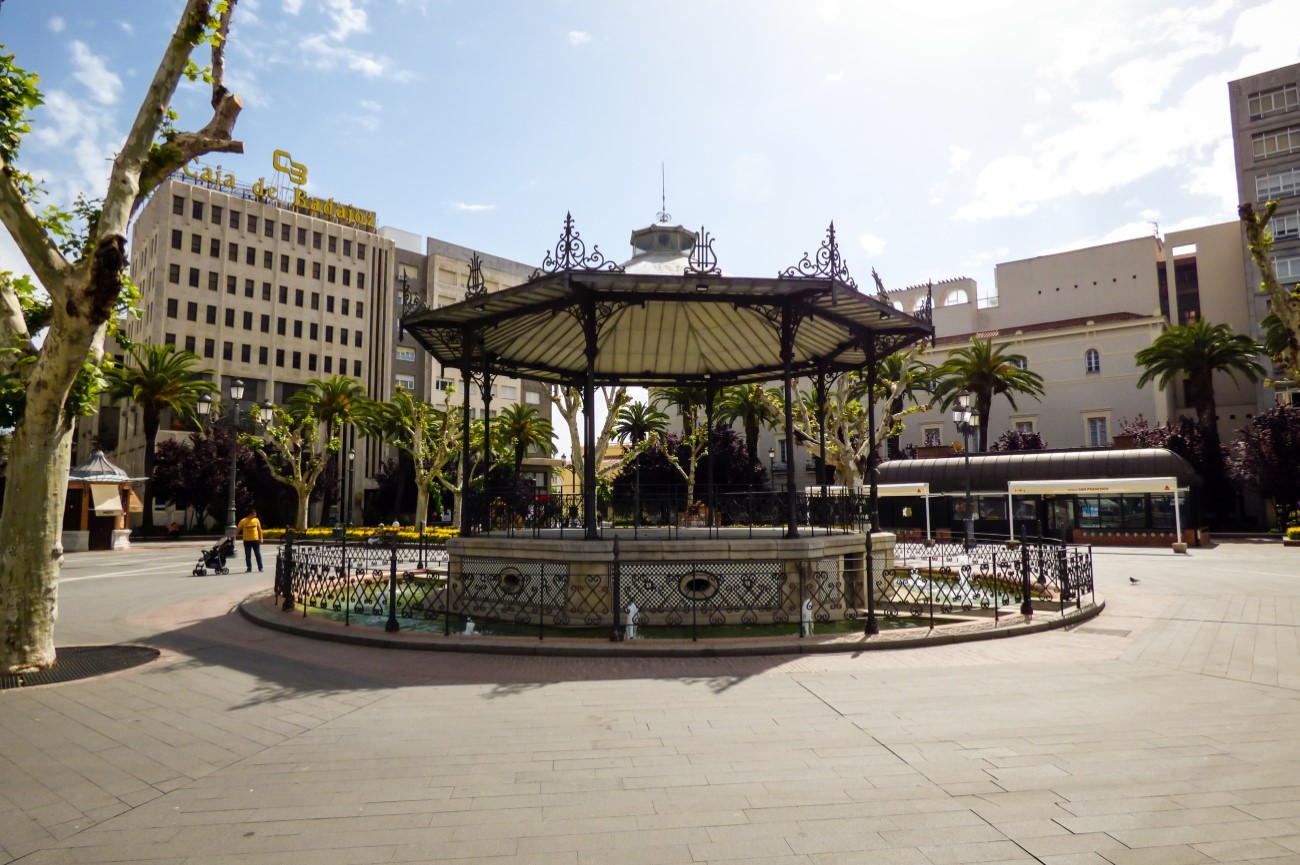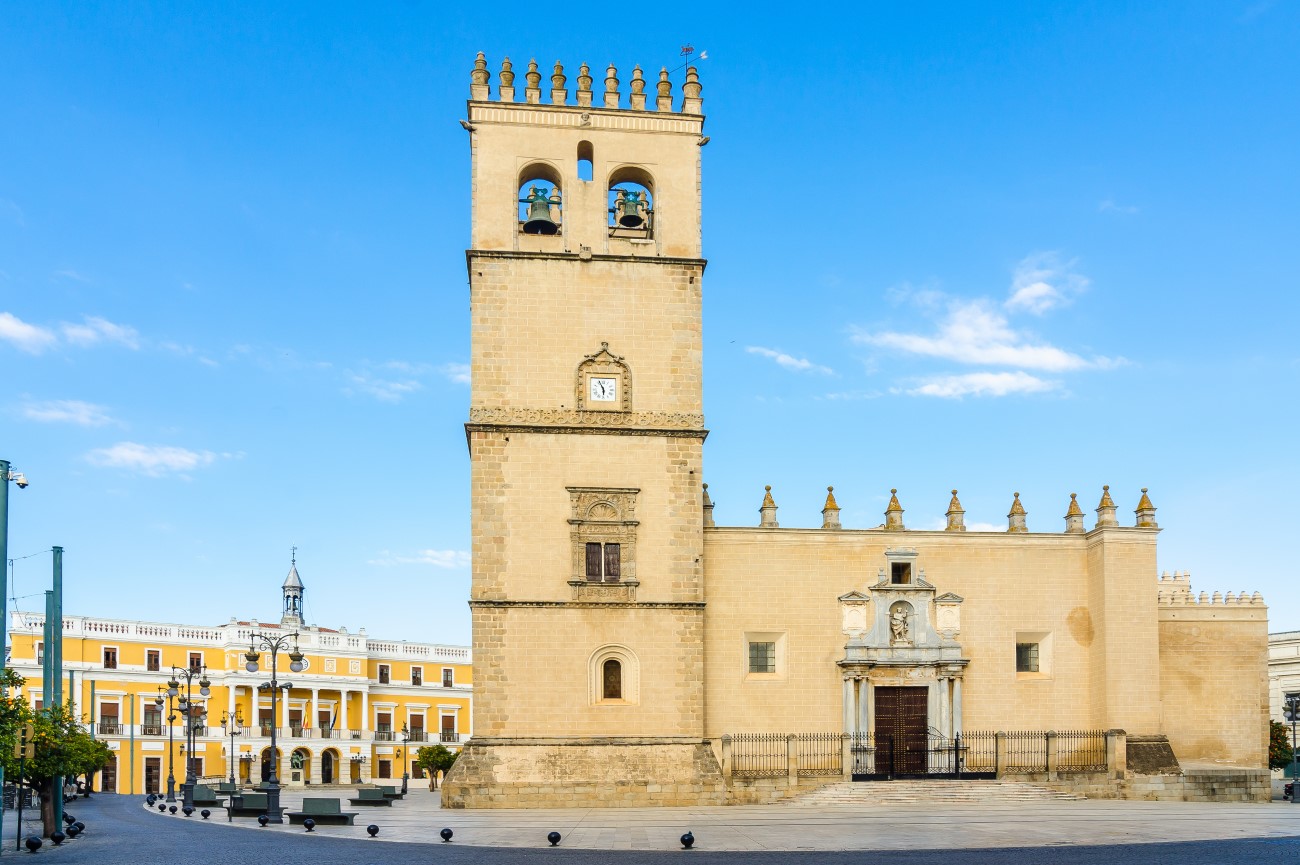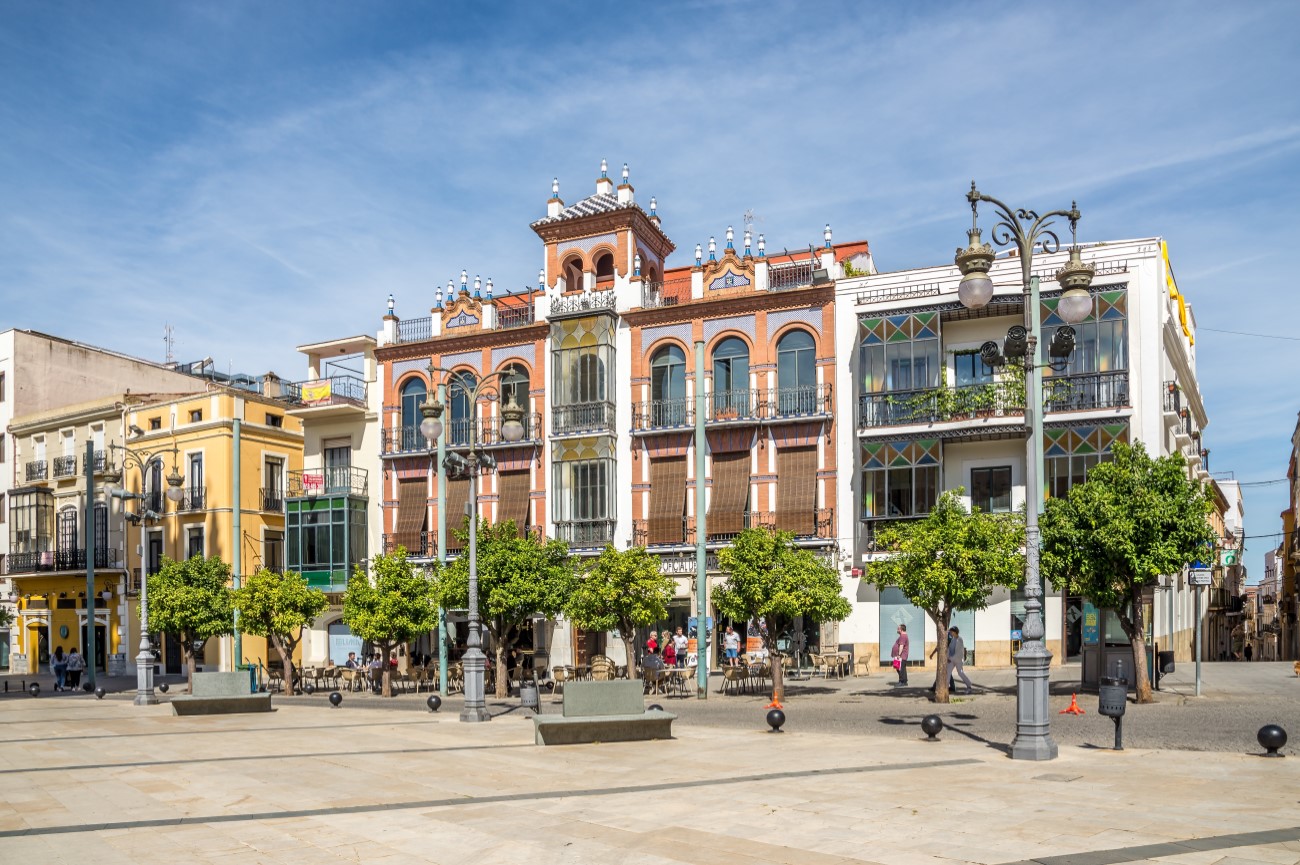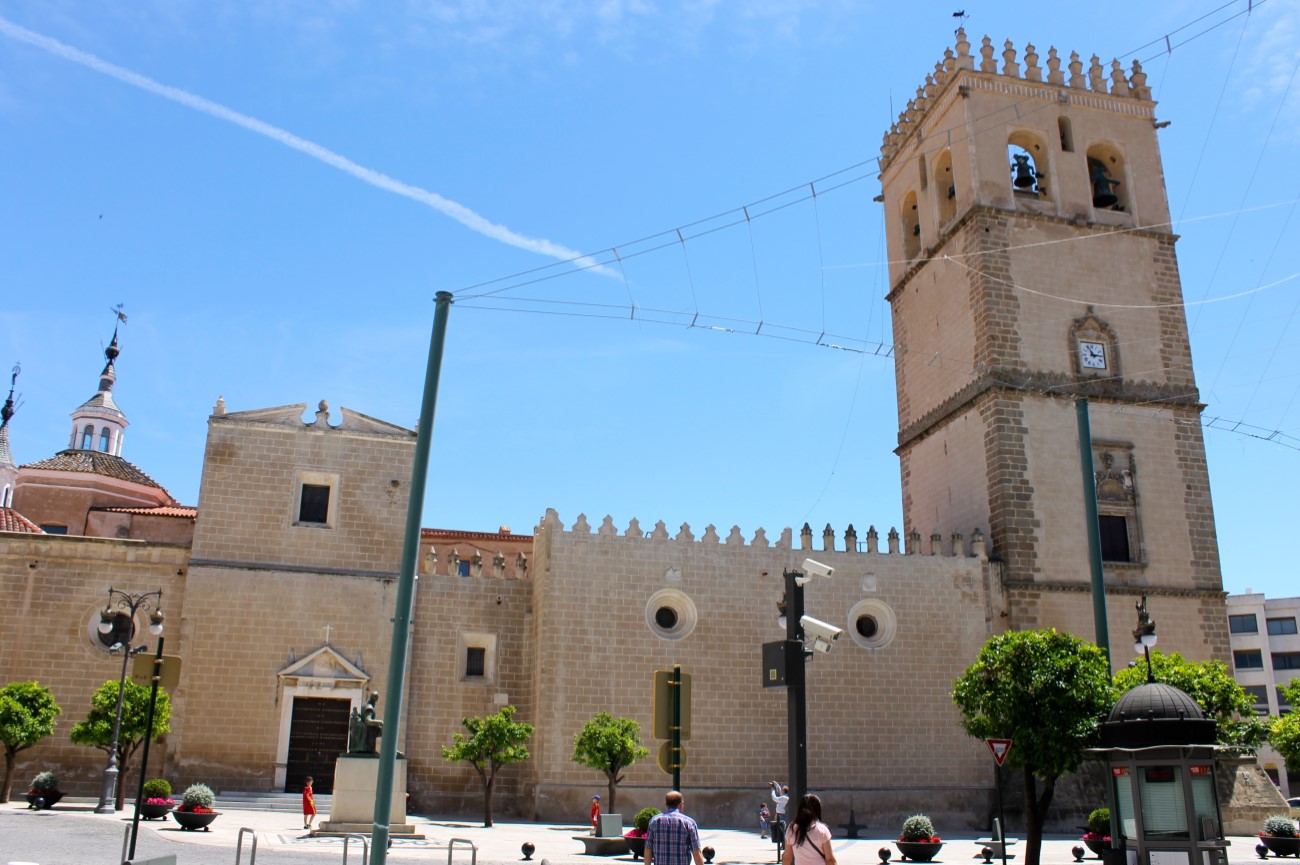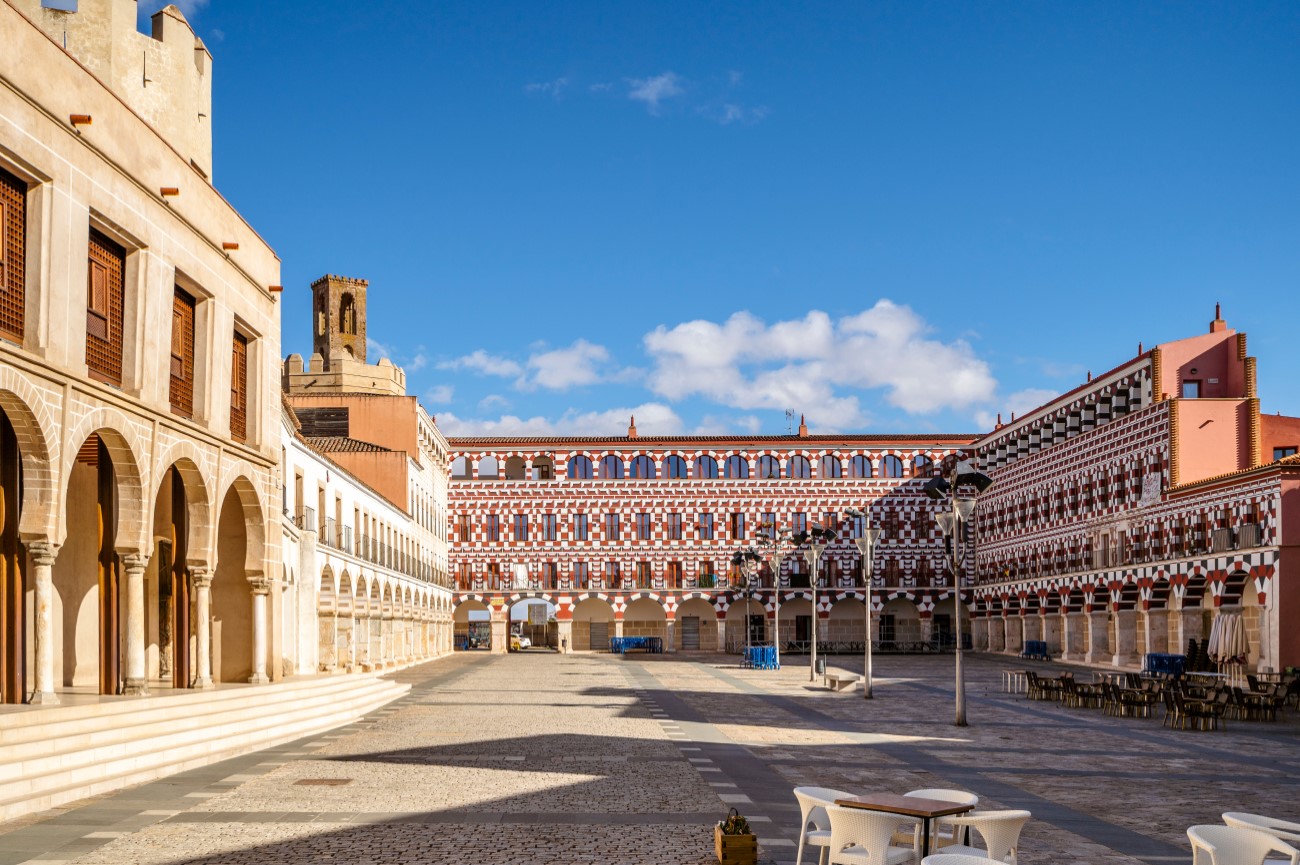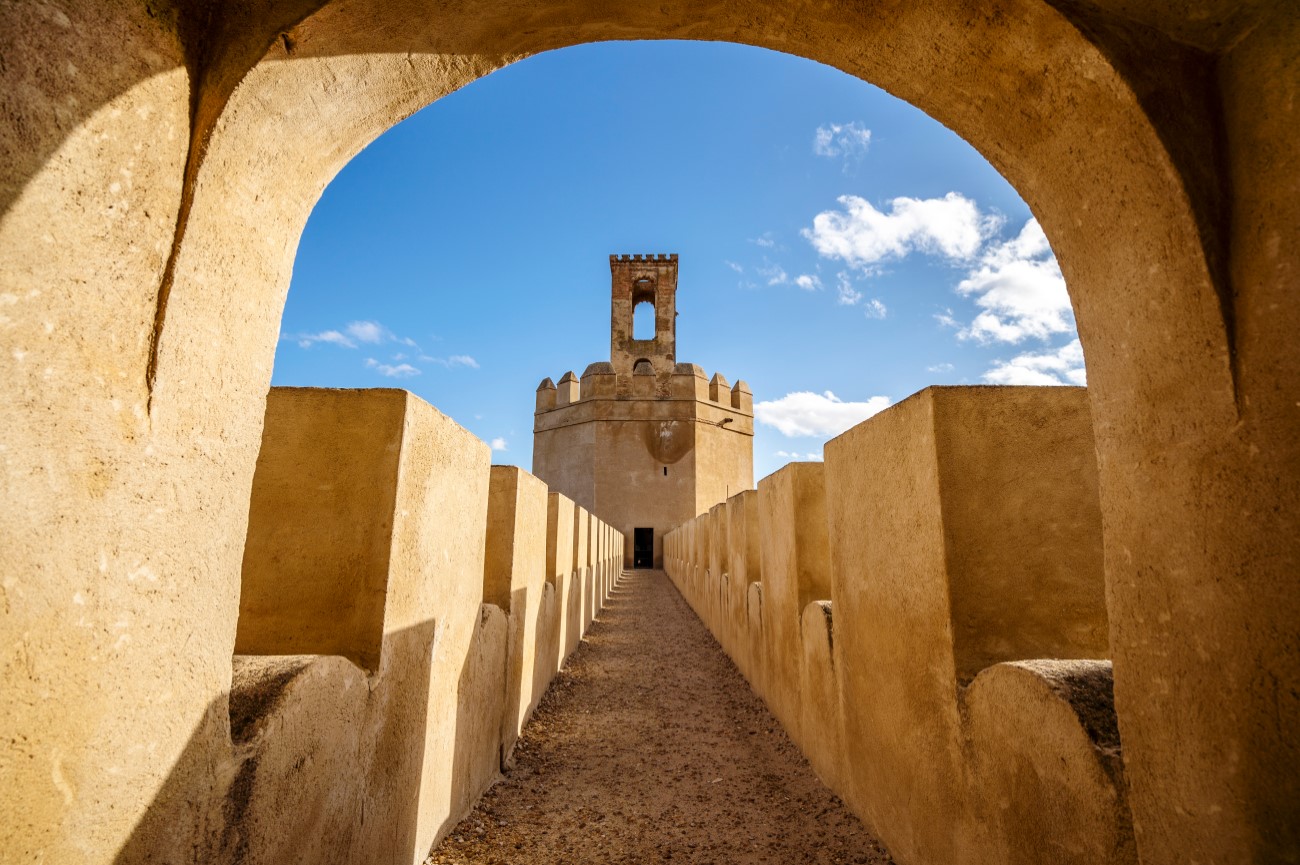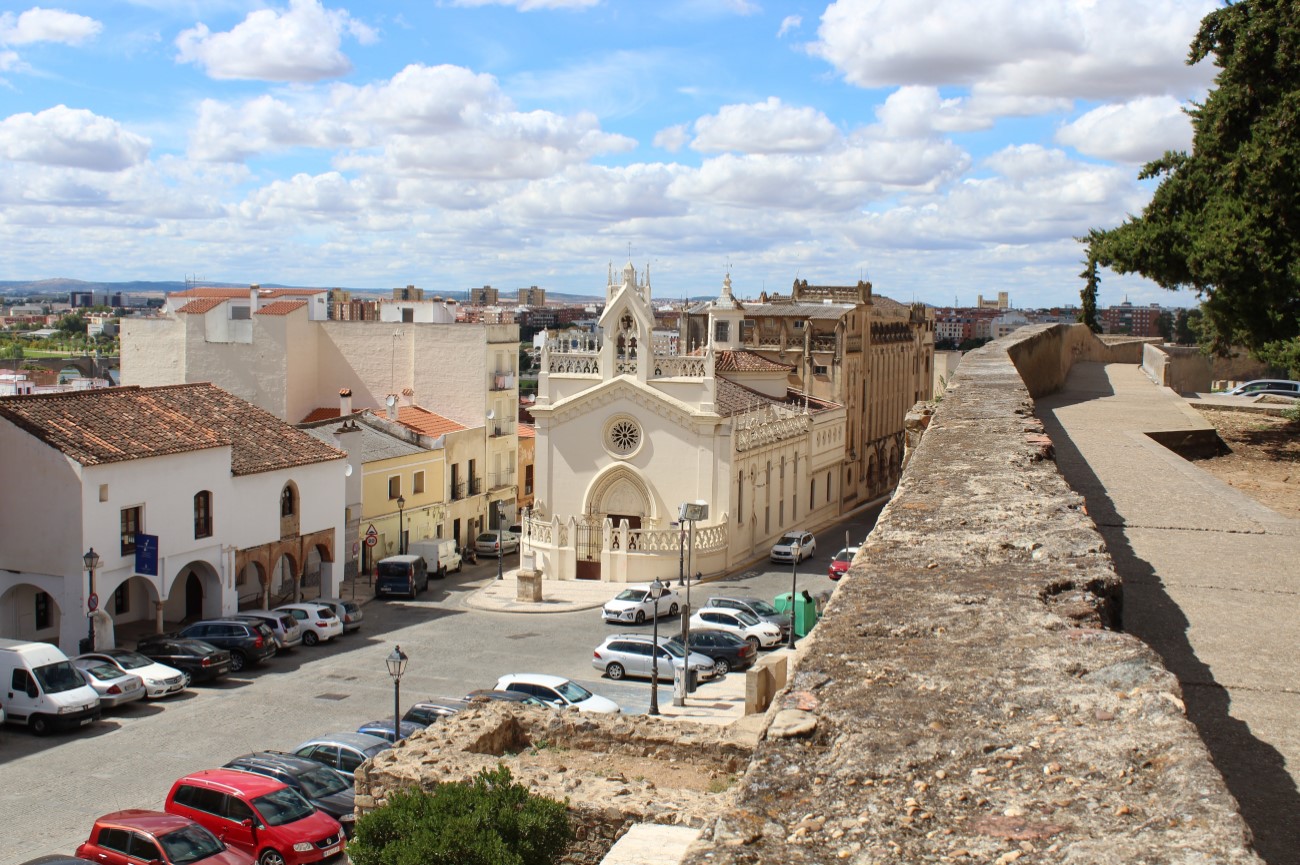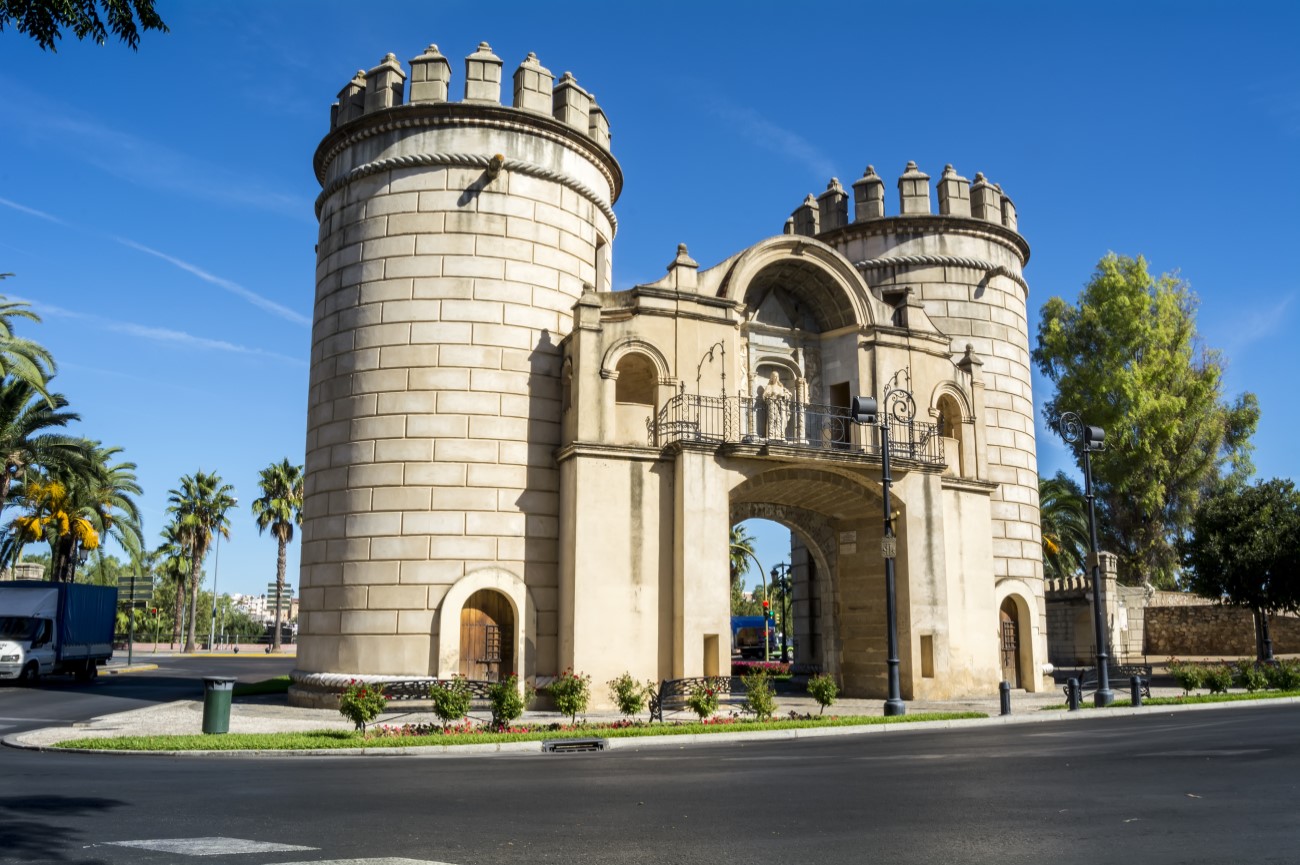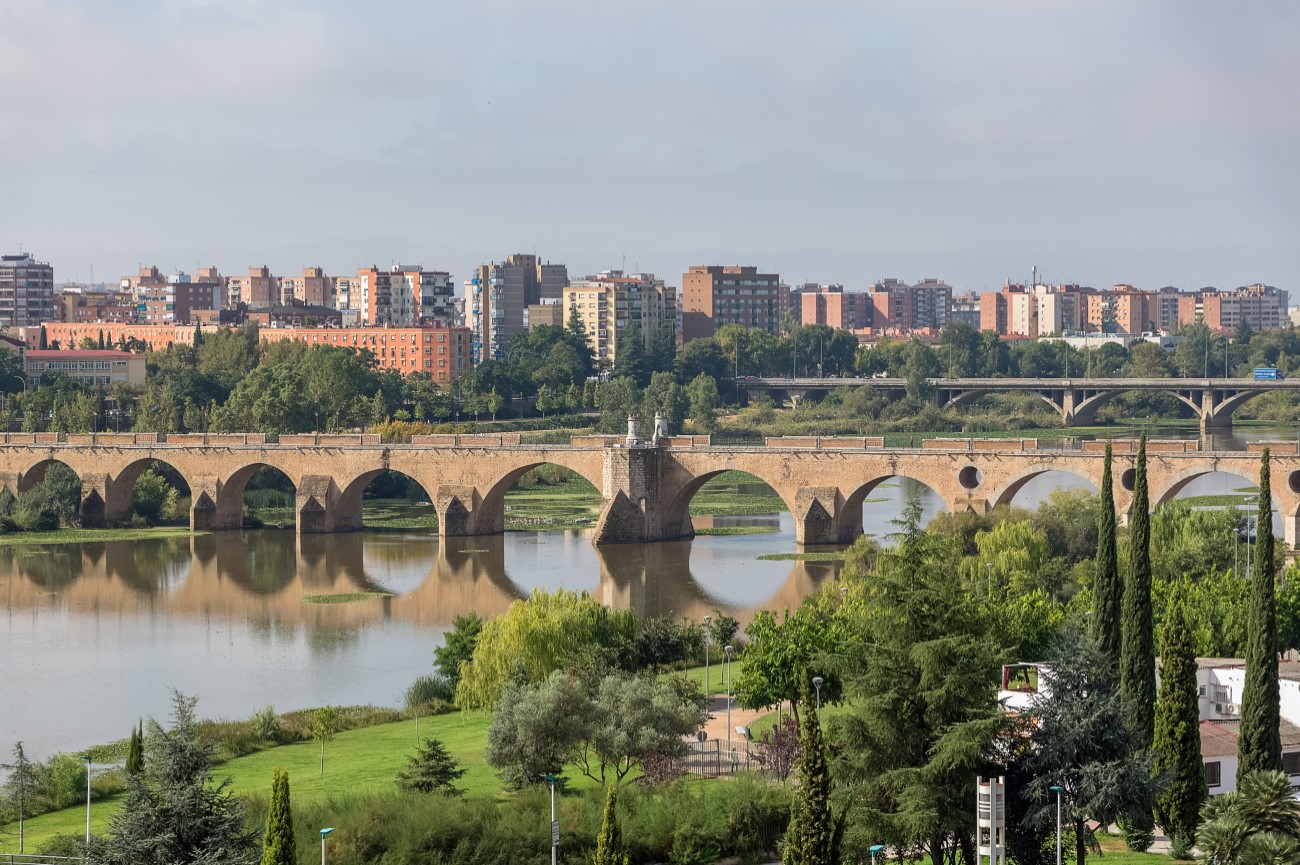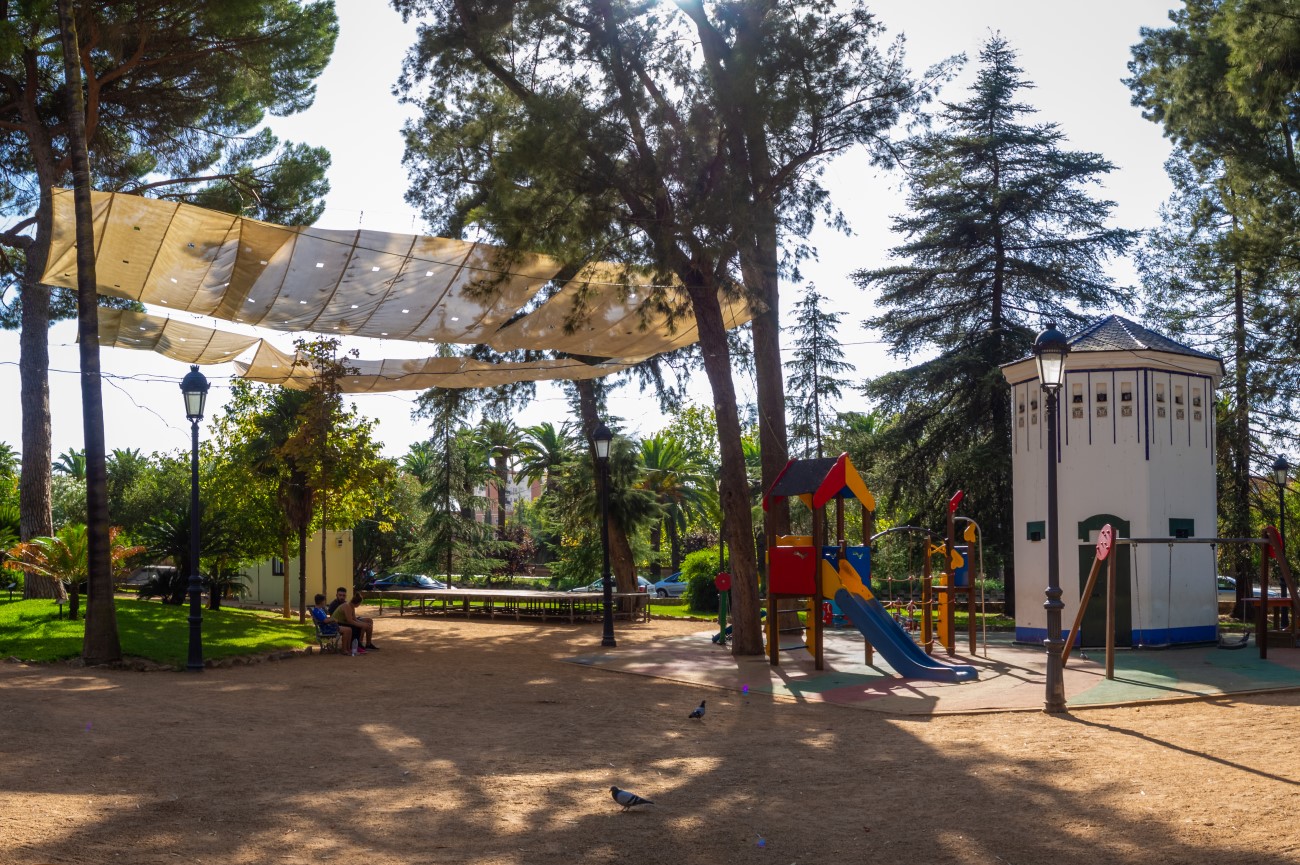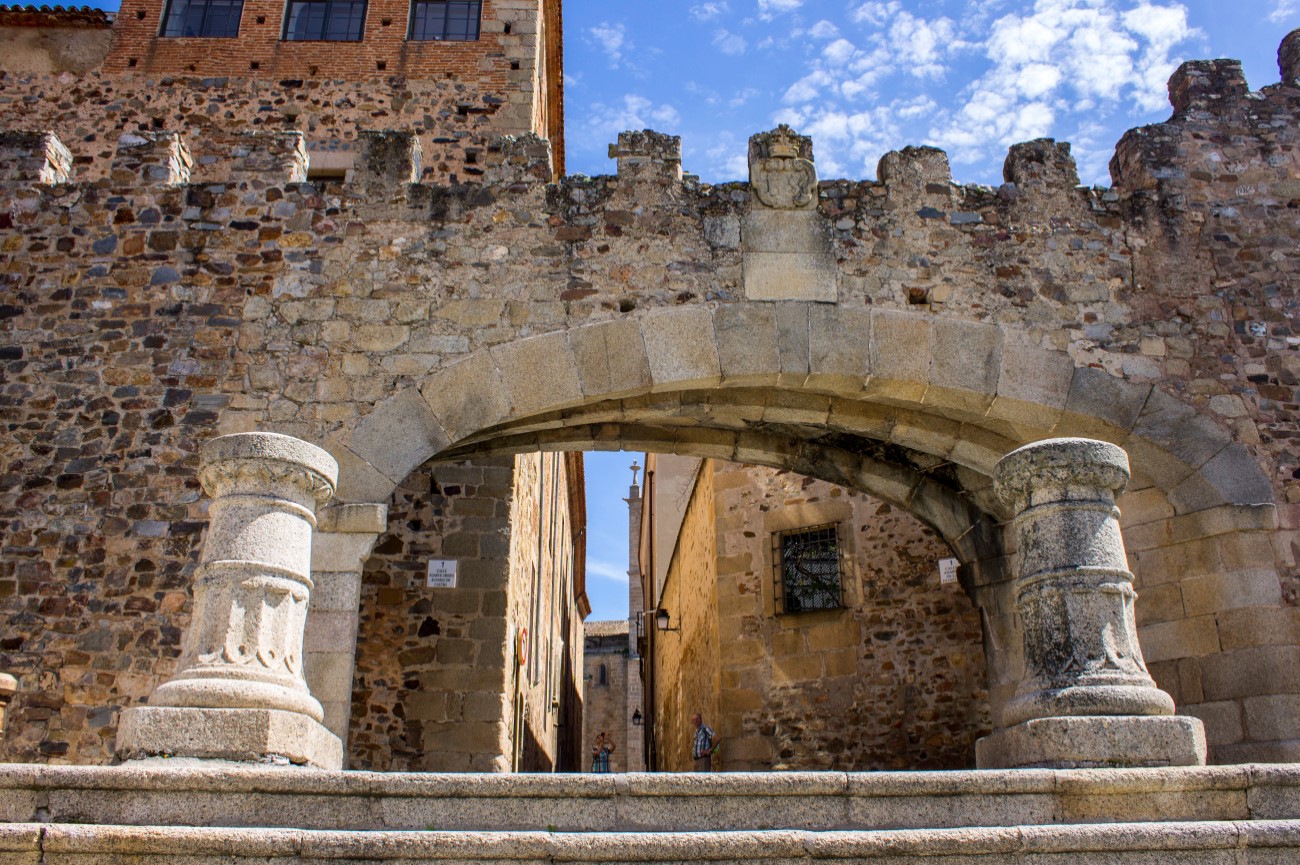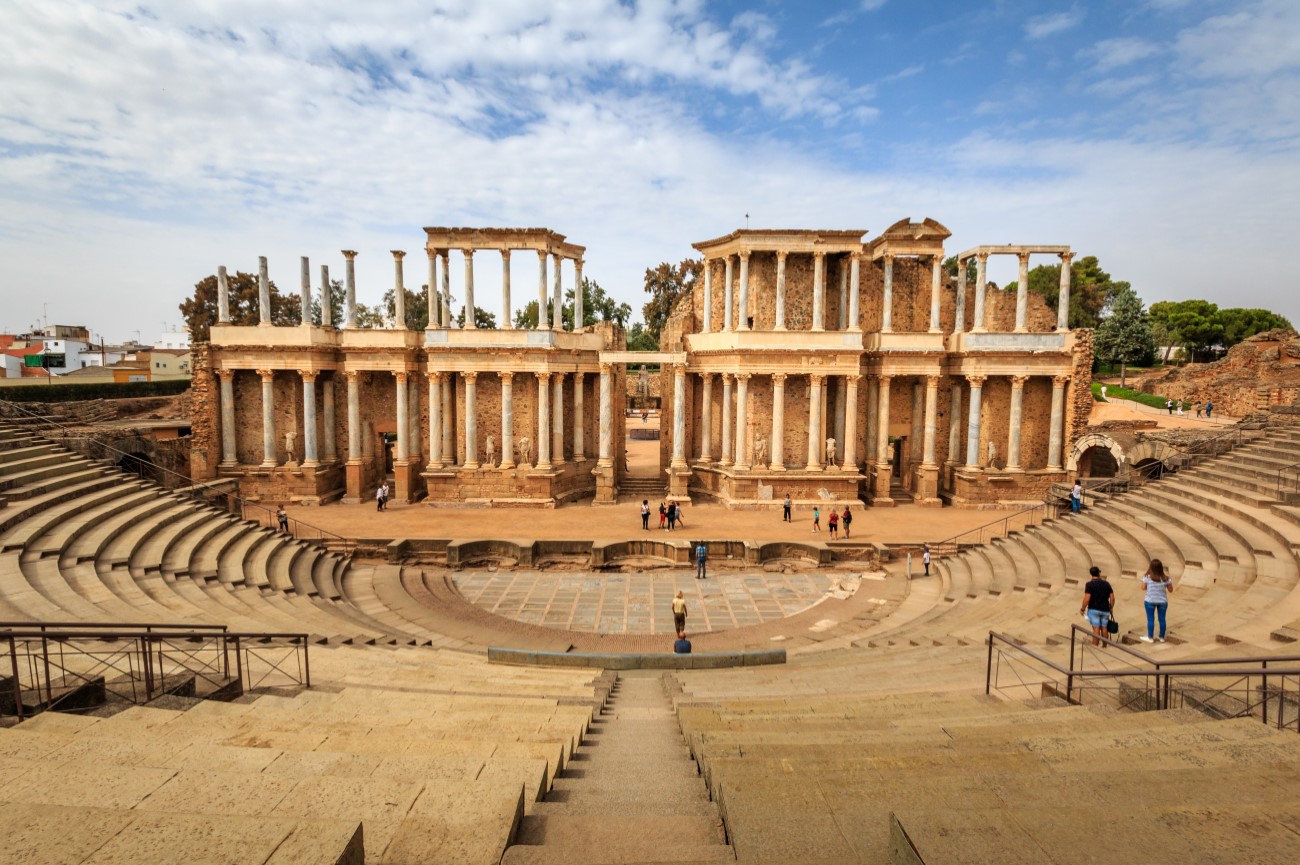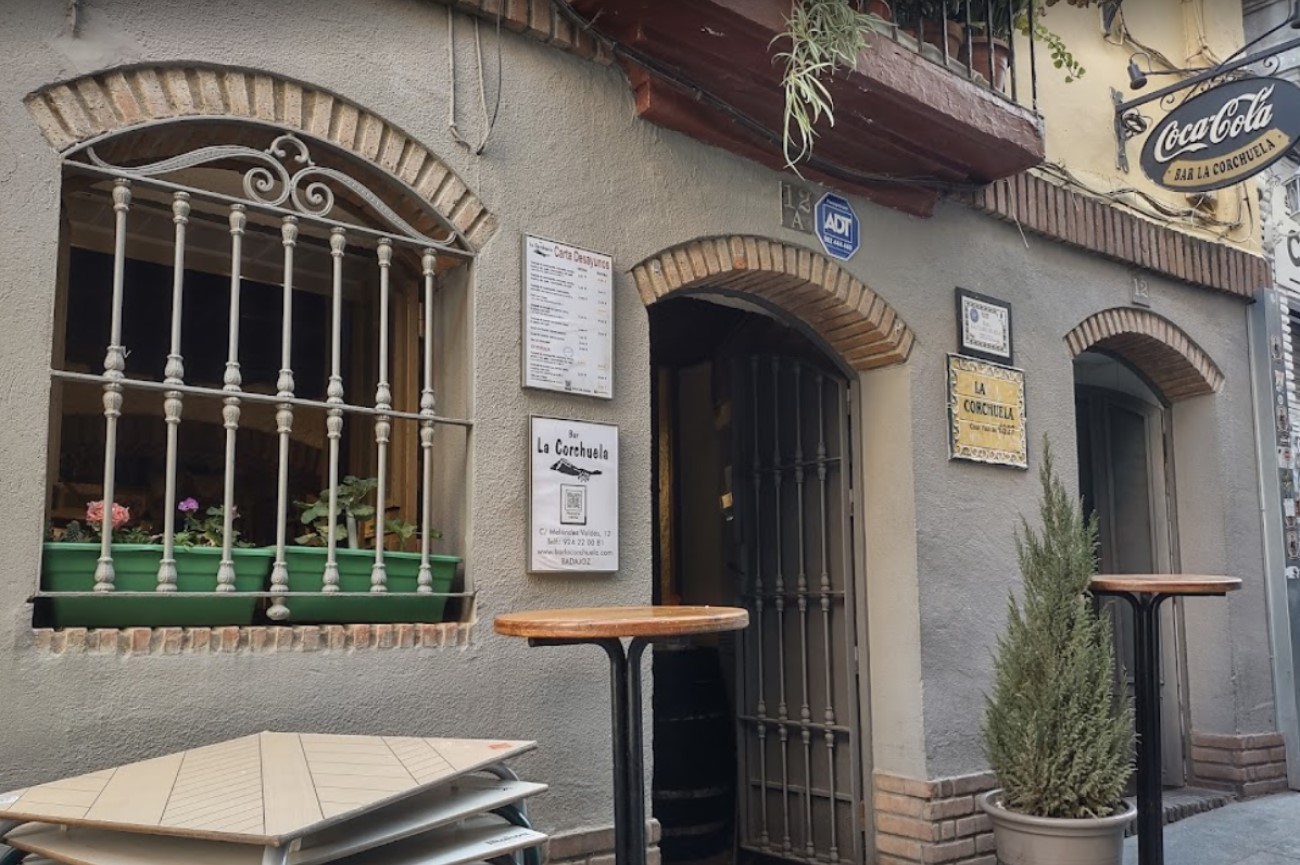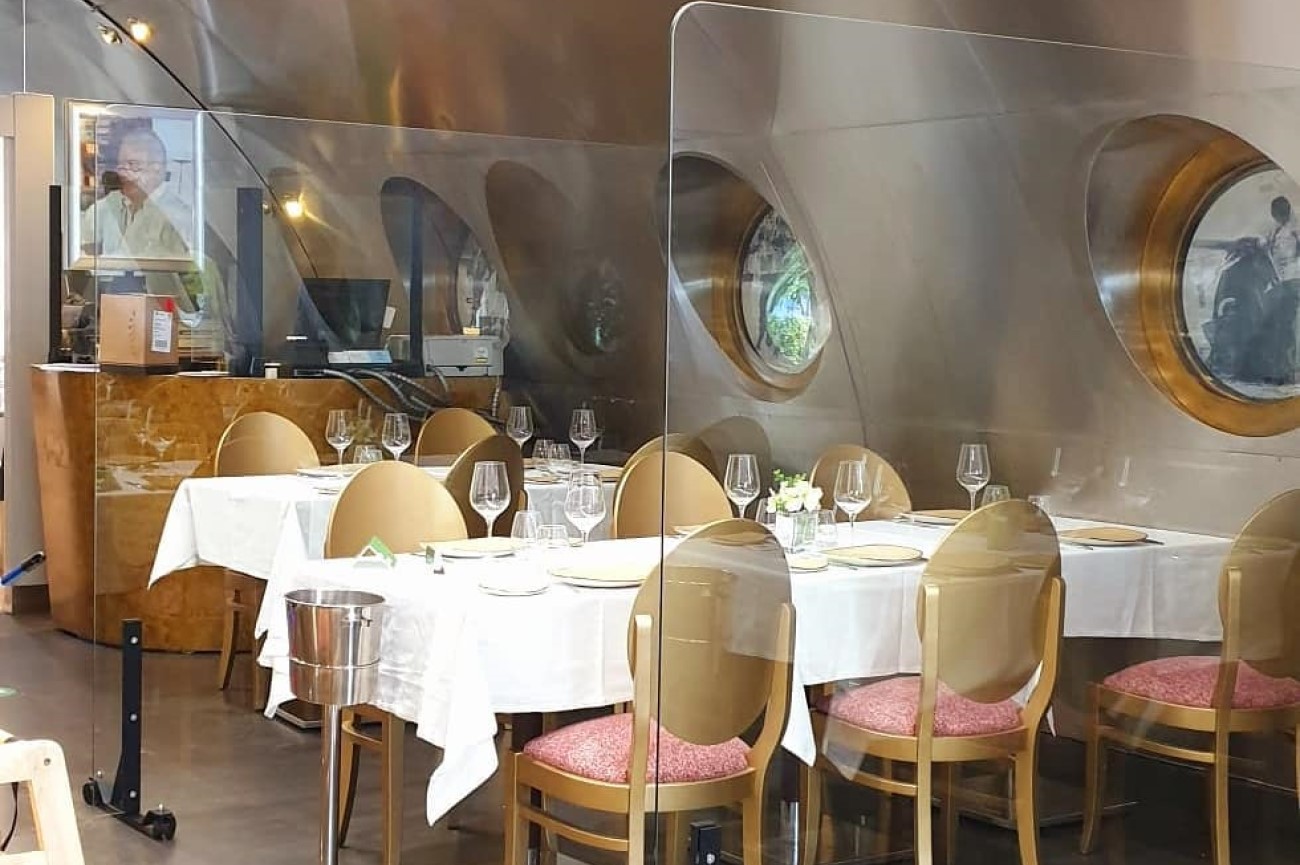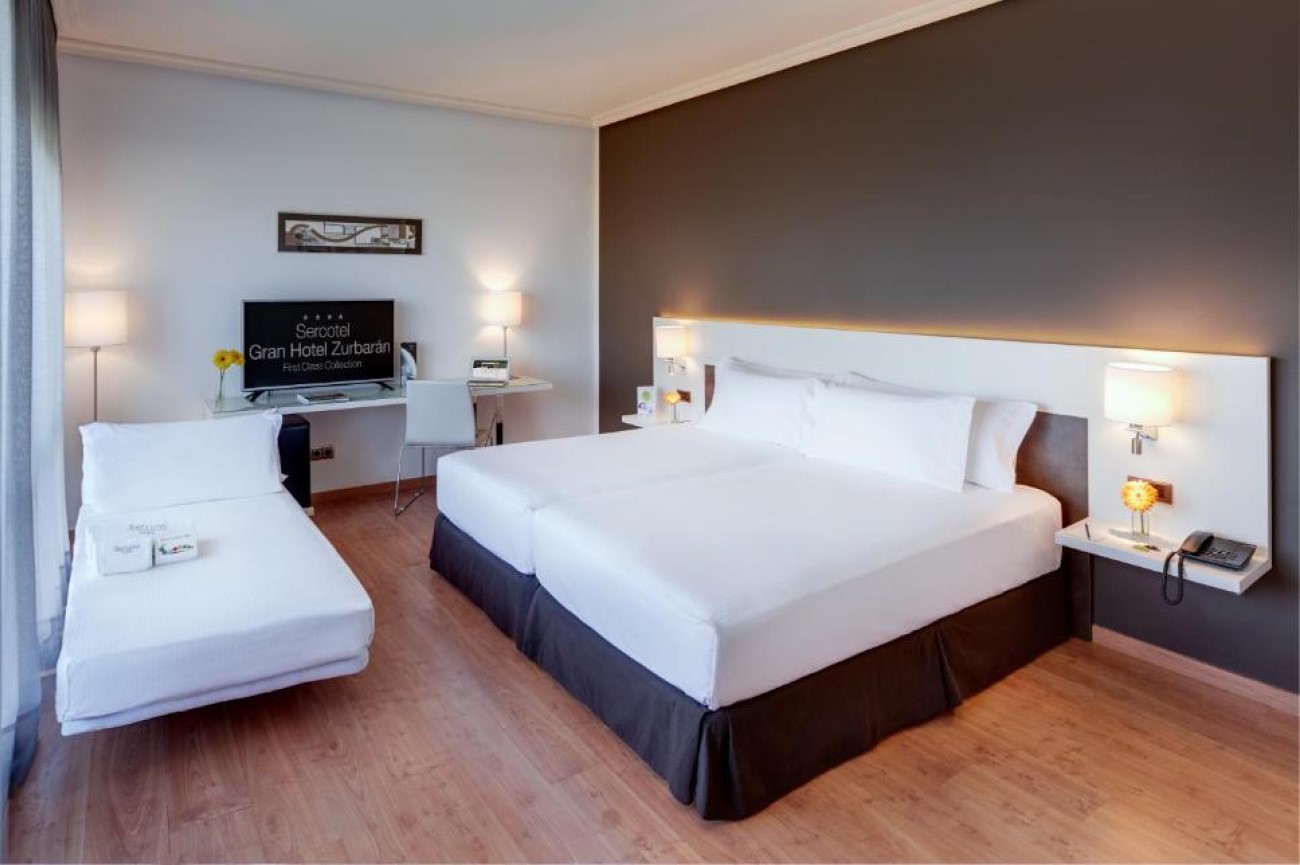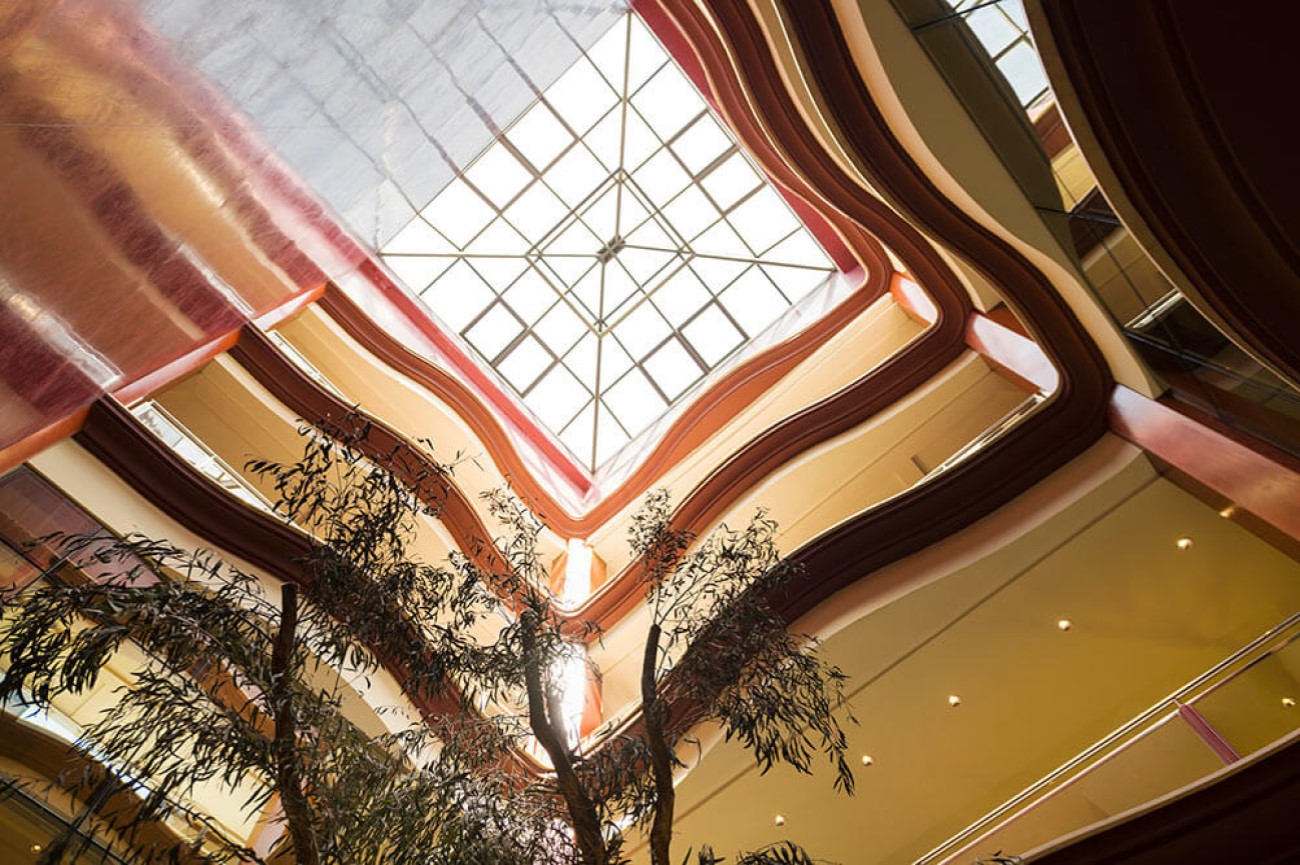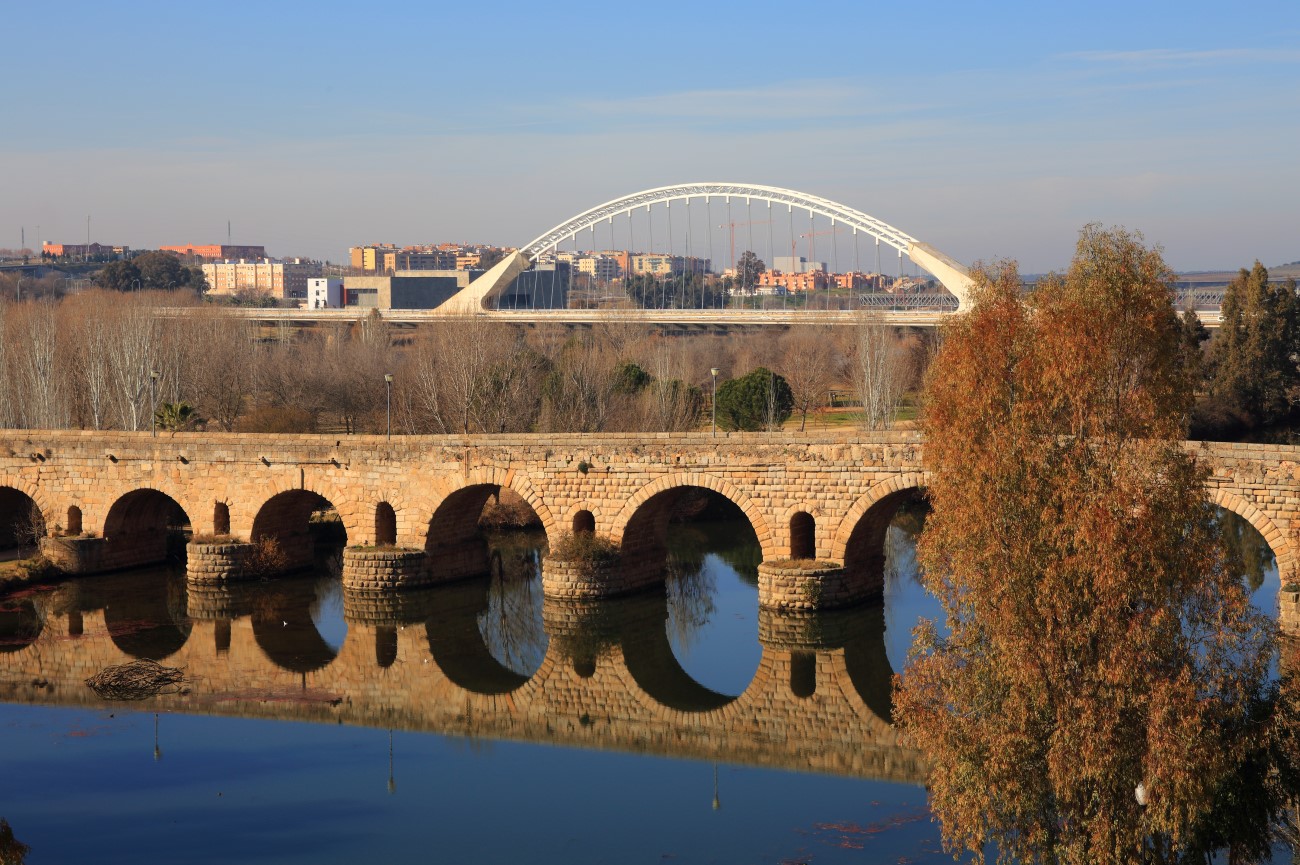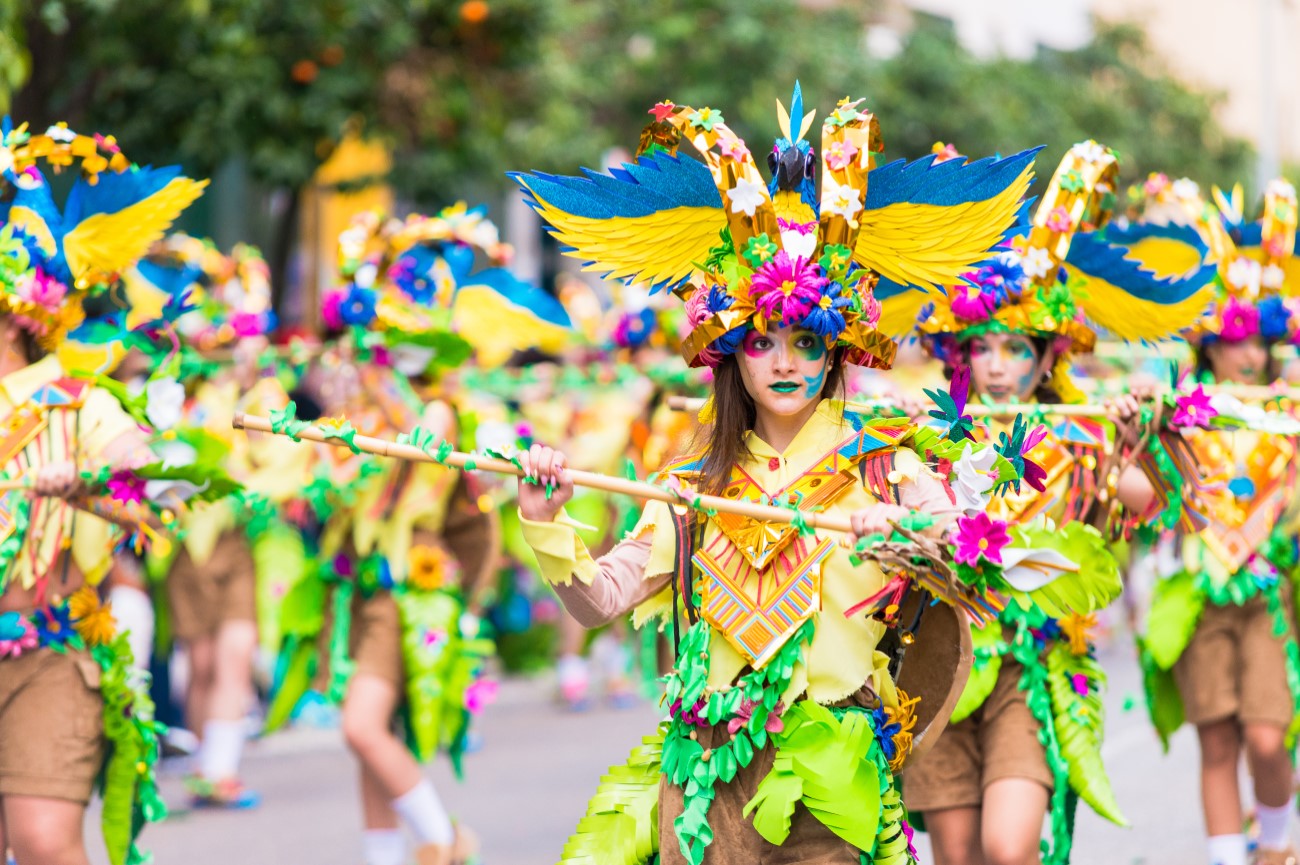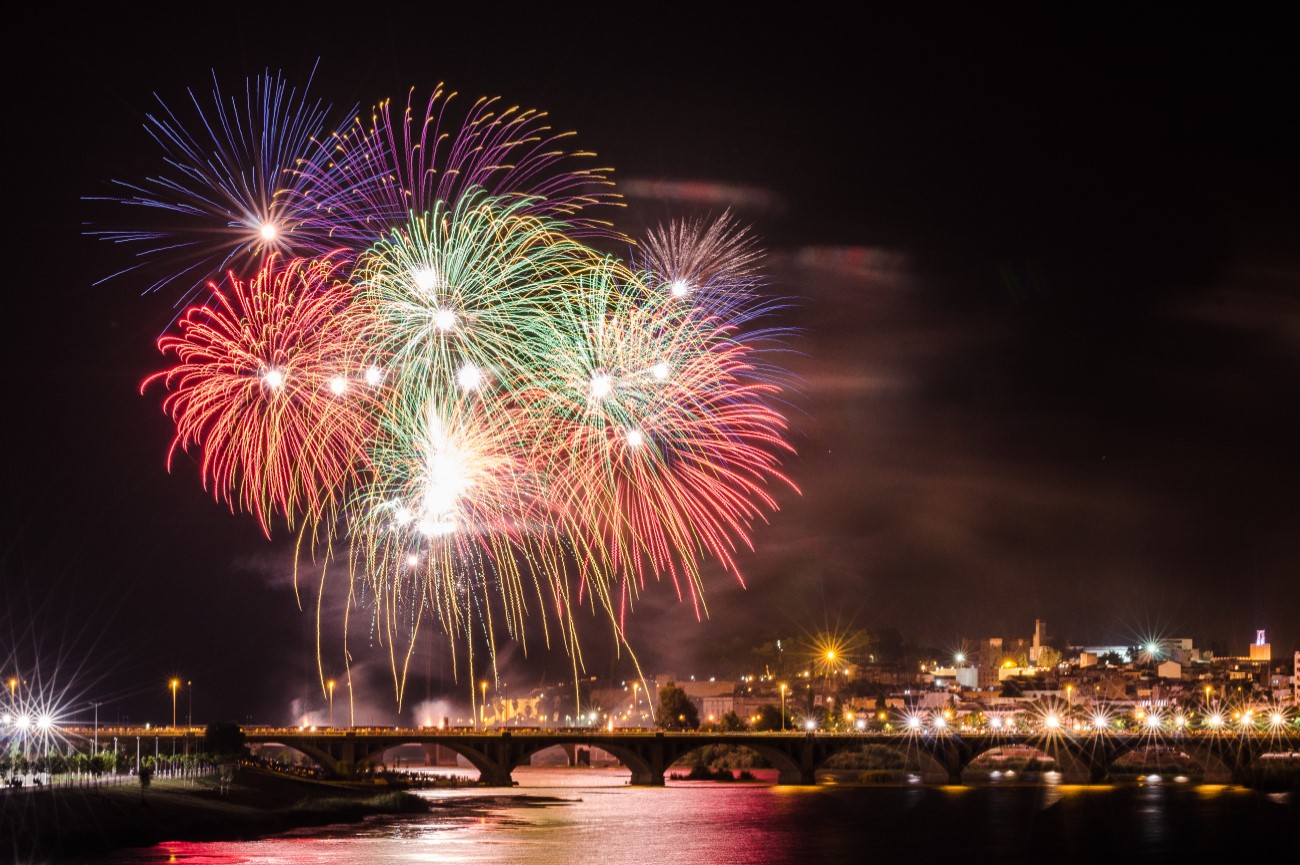Things to do in Badajoz, Spain - 1-day itinerary
Badajoz may not be the most scenic of cities in the Extremadura region, but it’s worth the detour if you’re travelling through southwest Spain. A stroll through its old town reveals the colourful Plaza Alta with its red-and-white facades and the medieval Cathedral of San Juan Bautista. Up on a hill is the Alcazaba, a 12th-century Moorish citadel. Standing here, you can see neighbouring Portugal, which sits just beyond the borders of Badajoz. Our one-day itinerary will show you the best things to do in Badajoz, including tips on where to eat and stay.
Day 1

Morning: Plaza de la Soledad
Start your journey at the Plaza de la Soledad, in the heart of the Old Town. Grab a café solo (or espresso in Spanish) and take some time to admire the surrounding buildings like the Edificio Las Tres Campanas and La Giraldilla. Also on this square is the Ermita de la Soledad, a stunning church with a Byzantine-like interior. It was built in two stages, one in the 17th century and the other in the 20th century. Inside is a statue of the Virgen de la Soledad, the city's patron saint.
La Giraldilla
Facing the Plaza de la Soledad is La Giraldilla, a replica of the tower in Seville. Erected in the 1930s, it stands out with its Neo-Mudéjar style. Adorning the top of the building is a statue of Mercury, god of commerce, as this used to be the city's commercial area. Today, La Giraldilla serves as the headquarters of the phone network company, Telefónica, but the building is still worth capturing.
Paseo San Francisco
Crossing the old town, you’ll soon reach the Paseo de San Francisco. This charming park is home to kiosks, a 16th-century church and many stunning tiled-covered benches.
Plaza de España
Like in many other Spanish cities, Plaza de España is among the central squares in Badajoz. It features several historic buildings, such as the Cathedral of San Juan Batista, the Municipal Palace, the Town Hall, Casa Álvarez-Buiza and the Casa del Cordón. Take a walk around the square and enjoy a drink in one of the nearby bars surrounded by orange trees.
Badajoz Cathedral
While in Plaza de España, don't miss a visit to the Catedral de San Juan Bautista. Established around the 13th century, it is one of the city's top landmarks. At first sight, it may look like a fortress, and there is a good reason for it. Initially, the cathedral was erected outside the city's defensive walls, so it needed protection from attacks. Inside, you can admire the Plateresque-style windows and the ornate altar. There's also a museum featuring Renaissance paintings and sculptures.
Plaza Alta
Our next stop is the Plaza Alta, a 17th-century square that sits beneath the walls of the Alcazaba. It is divided into two sections: the side near the citadel is defined by a soft brown and white decoration and is home to iconic buildings like the old town hall. Meanwhile, the other side of the square showcases a striking contrast of red and white, with Moorish-inspired residences called Casas Coloradas. Visit Plaza Alta in late September and enjoy the Arab-style market held here during the city’s Almossassa festival.
Afternoon: Torre Espantaperros
The Torre Espantaperros is one of the main towers of the Alcazaba and served as the inspiration for the Torre del Oro in Seville. Its name translates to “Dog Frightener” and comes from the sound of the bell that used to call Christians to pray, while chasing away the ‘infidels’ known as ‘dogs’. Guided tours are very limited and start from the Oficina de turismo Casas Mudéjares.
Plaza de Sán José
Continue towards the Plaza de San José. In this square, you can admire a beautiful set of Casas Mudéjares, some of the oldest houses in the city, dating back to the 15th century. Today these are occupied by the Badajoz Tourism Office. Alongside the houses, you can spot the striking Neogothic church, Convento de San José.
La Alcazaba de Badajoz
It's finally time to visit the infamous Alcazaba. This 12th-century fortress is among the biggest in Spain. Overlooking the Guadiana river and the Portuguese border, it was a strategic location for the Moors for many centuries, protecting the city against attacks. You can enter the citadel from any of the four gates. However, the most iconic one is the Puerta del Capitel. Once inside, take your time to admire the ancient Moorish architecture, visit the Archaeological Museum and climb up the walls to take in the panoramic city views.
Puerta de Palmas and Puente de Palmas
Another iconic gate is the Puerta de Palmas. During medieval times, this was the main entrance to the city, and its two towers served as a prison. Right in front is the Puente de Palmas, the oldest bridge in Badajoz, joining the two banks of the Guadiana River. It was built during the 16th century and has been reconstructed several times due to flooding. It used to be a raised bridge, higher in the centre, and included gates to control passages. However, those features are no longer visible.
Parque de Castelar
End your visit to Badajoz with a calm and peaceful stroll along the Parque de Castellar, one of the city's green spaces. The park occupies the old olive grove of the Santo Domingo Convent and is now lined with tropical palm trees, benches, statues, and spaces for the little ones.
Day 1 - Badajoz Tour Map
Other places to see around the Extremadura region
- Cáceres: This historic city has been occupied since the Romans. The old town, known as the Ciudad Monumental, stands out with its maze of cobbled streets surrounded by palaces and churches. Cáceres is still surrounded by defensive walls and several towers that now serve as nesting spots for storks.
- Mérida: Mérida is the official capital of the Extremadura region. It is famous for its Roman ruins, which are scattered around the city. These include the Teatro Romano, a theatre that still hosts performances today and the Puente Romano, a bridge stretching along the Guadiana for 792 metres. Other sites worth visiting include the 9th-century Alcazaba and the National Museum of Roman Art.
Top things to do with kids in Badajoz
As a small city, Badajoz can easily be covered on foot. Families can learn about the city's history by exploring monuments like the Alcazaba or the Torre Espantaperros. When you need a break from sightseeing, you can rest in the local squares or parks like the Parque de Castelar, which features a kiosk and a small playground for children. You can also stroll along the Guadiana river at the end of the day.
Where to eat in Badajoz
While in Badajoz, it’s worth sampling the Extremaduran cuisine. Iconic dishes include the patatera, a sausage made of pork, mashed potato, paprika and Iberian ham. Other highlights include the sopa de antruejo (a bread-based soup with pork, chorizo and onion). For dessert, don’t miss the perrunillas, a biscuit made with cinnamon, butter and lemon. Below are some of the best places to eat in Badajoz:
- Bar La Corchuela: Close to Plaza de España, this no-frills tapas bar is famous for its selection of Iberian meats and cheeses. It’s open from early morning to evening, so you can come by for any meal.
- Bar Tapería Ajonegro: This lively bar serves a variety of Spanish tapas. Highlights include the croquetas, the tartar and the smoked tuna.
- Restaurante Galaxia: This traditional restaurant opposite El Corte Inglés serves a mix of meat dishes like roast suckling pig and seafood options like carabineros (large deep-sea prawns).
Where to stay in Badajoz
- NH Gran Hotel Casino Extremadura (5 stars): This luxury hotel sits near the Puente de Palmas. It offers 58 rooms, with the premium ones offering views of the Guadiana river. Guests also have access to the in-house casino, lobby bar, restaurant, gym and a terrace.
- Sercotel Gran Hotel Zurbarán (4 stars): Facing the Parque de Castelar, this modern hotel is close to many of the city's top attractions. The rooms offer a simple decor, with some featuring balconies overlooking the park. Facilities include a café, a gym and a meeting room.
- Hotel Badajoz Center (4 stars): This four-star hotel is located slightly further from the city centre in a commercial area. However, it offers convenient facilities like a restaurant, an outdoor pool and a bar.
Best time to visit Badajoz
The best time to visit Badajoz is around spring and autumn. The temperatures are pleasant enough for a stroll, and there are fewer tourists on the streets. Between June and August, it gets quite hot, with temperatures reaching as high as 35ºC. However, this is also the season of one of the city's biggest festivals, the Feria de San Juan. Another alternative is to visit in February to catch the annual carnival celebrations.
Badajoz Festivals
- Carnaval de Badajoz: Considered a National Tourist Interest, the Carnival of Badajoz is an iconic event held around February or March. It is one of the best carnival celebrations in Spain, attracting thousands of people every year. Locals dress up with their favourite costumes and take over the city’s streets, with the party lasting until the wee hours.
- Feria de San Juan: In June, Badajoz celebrates a festival in honour of San Juan Bautista. The traditional Feria de San Juan lasts a whole week and is one of the biggest in Extremadura. It brings together Spanish and Portuguese citizens every year to celebrate the coming of summer. The festival starts with the official inauguration of the alumbrado, with lights adorning the Portada del Real. During the week, there are fairs, street food, concerts and shows. To end the celebrations, on the night of San Juan, the 23rd of June around 11:00 pm, you can enjoy an impressive firework display along the margins of the Guadiana.


